SOCIAL
Facebook Launches New Gaming Fan Groups as Part of its Broader Push into the Gaming Space
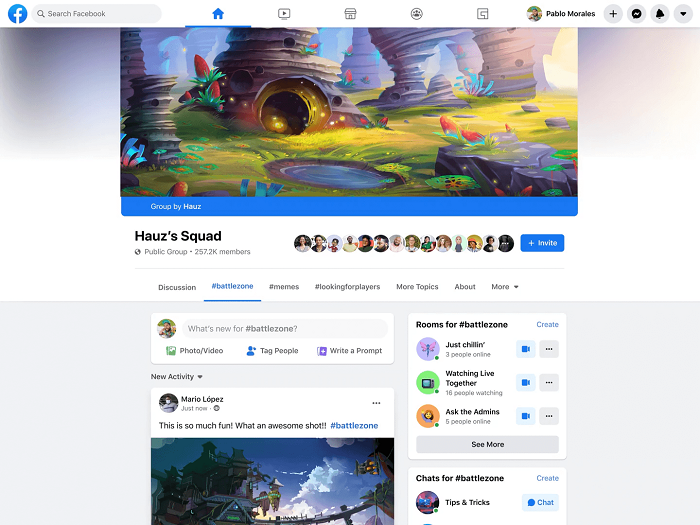
Facebook CEO Mark Zuckerberg has announced a new group type specifically designed for gaming creators, as Facebook continues to lean into gaming, in an effort to maximize its presence in the fast-growing space.
Facebook’s new gaming Fan Groups are being launched today with selected gaming creators, and are designed to facilitate improved connection within gaming communities.

As you can see in this screenshot, Facebook’s new Fan Groups include new elements like #tags for topics to streamline navigation to relevant discussions within the community.

That will help players connect with the content most aligned to their specific interests, while Facebook’s also looking to help gamers link up for actual games within these groups via a new ‘Looking for Player’ post type.

That, again, will better facilitate community engagement and growth, by establishing stronger bonds with the people that you’re already in gaming groups with.
Facebook will also begin recommending relevant gaming groups to viewers at the conclusion of some gaming streams, while it’ll also prompt users to join Fan Groups after they’ve engaged with a creators’ Page. That could be a good way to grow these communities, and enhance connection among interested users.
As noted, Facebook CEO Mark Zuckerberg made the announcement during a test of Facebook’s new audio rooms feature, which also included a range of Facebook Gaming streamers in the audio chat, who each shared their experiences in building communities on the platform.
Facebook Gaming has seen a steady rise in interest, particularly over the last year, with StreamLabs reporting that Facebook Gaming surpassed a billion hours watched in 2020, a record for the platform. It still has a way to go in catching up to the leaders in YouTube and Twitch, but Facebook is gaining some ground in the space, which could leave it well-positioned to capitalize on the next phase of gaming content, which will be immersive gaming experiences in the VR realm.
Indeed, Facebook is already the leader in VR content, with its Oculus headsets now the leading VR unit, and as sales of its VR devices continue to rise, building communities like this, connected into Facebook’s massive network graph, could be key to broadening its horizons in the space, and establishing entrenched communities, aligned to the platform.
Which is really why today’s announcement is only the beginning. It may not seem like much, adding gaming groups into the broader Facebook ecosphere, but the idea, eventually, will be that these groups will facilitate broader connection and growth of Facebook’s VR tools, linking the two platforms together, combining scale and technology to maximize its gaming footprint.
In addition to this, Zuckerberg also noted that any badges earned during a creator’s live-stream will now carry over to the Fan Group as well, providing additional recognition for community members for their engagement during live broadcasts.
There’s a range of small, but relevant additions in here that could each have major significance in the longer term. And if you’re not paying attention to the growth of gaming, you really are missing a massive element of emerging culture, given its influence on virtually every part of the broader online sphere.
The live test of Facebook’s audio rooms got all the attention in this announcement, but the gaming tools are equally relevant to Facebook’s growth plans.
SOCIAL
Snapchat Explores New Messaging Retention Feature: A Game-Changer or Risky Move?
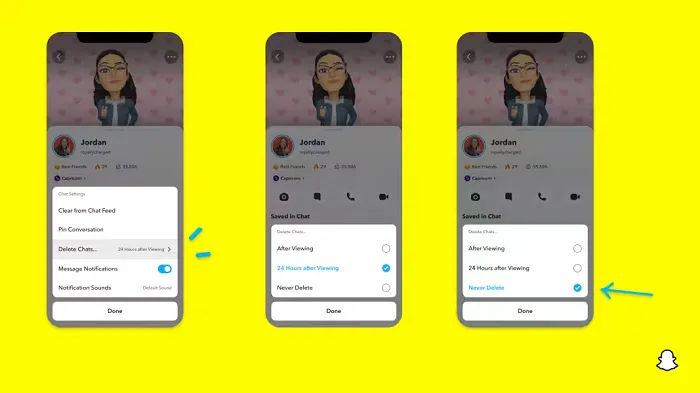
In a recent announcement, Snapchat revealed a groundbreaking update that challenges its traditional design ethos. The platform is experimenting with an option that allows users to defy the 24-hour auto-delete rule, a feature synonymous with Snapchat’s ephemeral messaging model.
The proposed change aims to introduce a “Never delete” option in messaging retention settings, aligning Snapchat more closely with conventional messaging apps. While this move may blur Snapchat’s distinctive selling point, Snap appears convinced of its necessity.
According to Snap, the decision stems from user feedback and a commitment to innovation based on user needs. The company aims to provide greater flexibility and control over conversations, catering to the preferences of its community.
Currently undergoing trials in select markets, the new feature empowers users to adjust retention settings on a conversation-by-conversation basis. Flexibility remains paramount, with participants able to modify settings within chats and receive in-chat notifications to ensure transparency.
Snapchat underscores that the default auto-delete feature will persist, reinforcing its design philosophy centered on ephemerality. However, with the app gaining traction as a primary messaging platform, the option offers users a means to preserve longer chat histories.
The update marks a pivotal moment for Snapchat, renowned for its disappearing message premise, especially popular among younger demographics. Retaining this focus has been pivotal to Snapchat’s identity, but the shift suggests a broader strategy aimed at diversifying its user base.
This strategy may appeal particularly to older demographics, potentially extending Snapchat’s relevance as users age. By emulating features of conventional messaging platforms, Snapchat seeks to enhance its appeal and broaden its reach.
Yet, the introduction of message retention poses questions about Snapchat’s uniqueness. While addressing user demands, the risk of diluting Snapchat’s distinctiveness looms large.
As Snapchat ventures into uncharted territory, the outcome of this experiment remains uncertain. Will message retention propel Snapchat to new heights, or will it compromise the platform’s uniqueness?
Only time will tell.
SOCIAL
Catering to specific audience boosts your business, says accountant turned coach
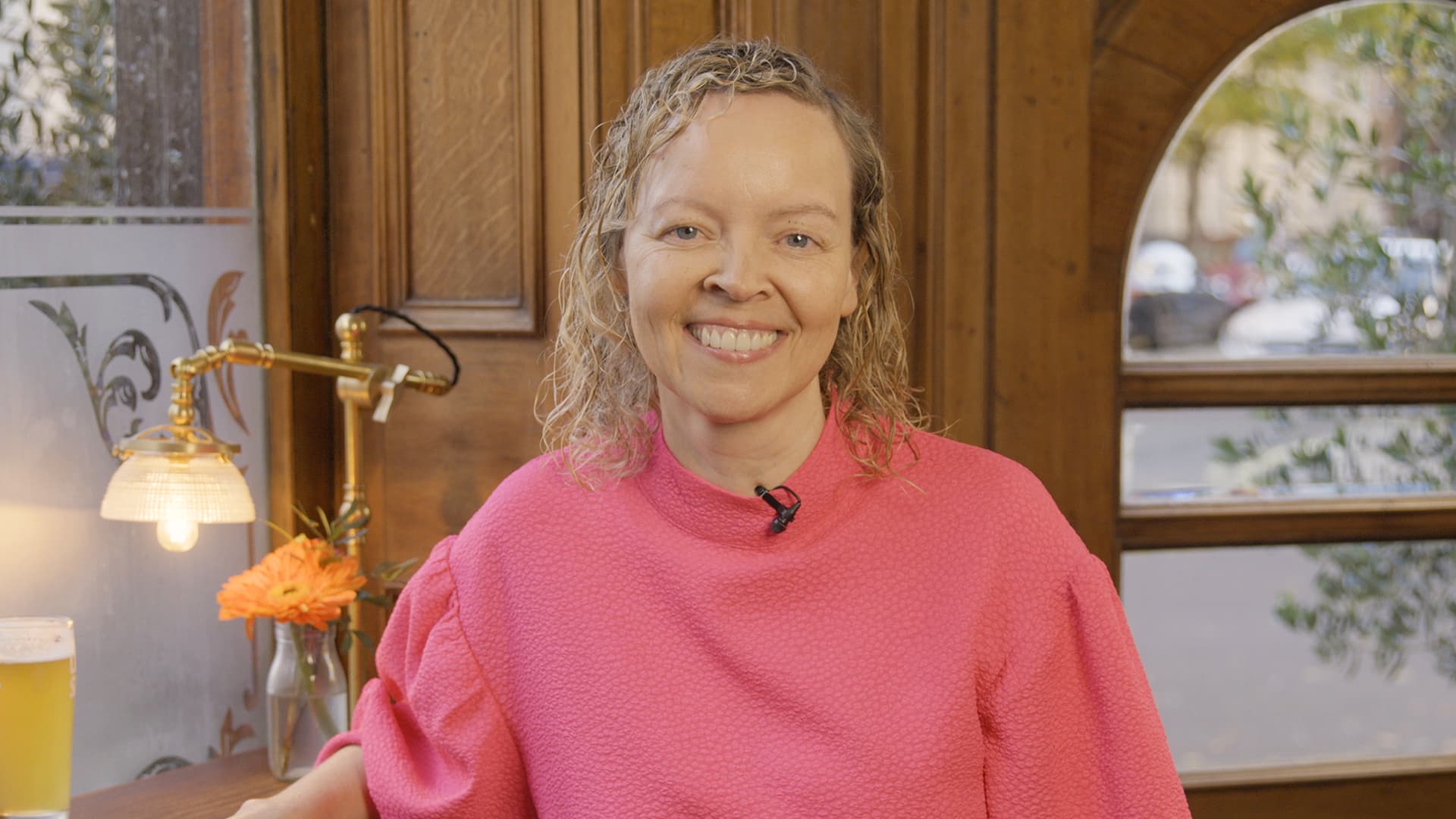
While it is tempting to try to appeal to a broad audience, the founder of alcohol-free coaching service Just the Tonic, Sandra Parker, believes the best thing you can do for your business is focus on your niche. Here’s how she did just that.
When running a business, reaching out to as many clients as possible can be tempting. But it also risks making your marketing “too generic,” warns Sandra Parker, the founder of Just The Tonic Coaching.
“From the very start of my business, I knew exactly who I could help and who I couldn’t,” Parker told My Biggest Lessons.
Parker struggled with alcohol dependence as a young professional. Today, her business targets high-achieving individuals who face challenges similar to those she had early in her career.
“I understand their frustrations, I understand their fears, and I understand their coping mechanisms and the stories they’re telling themselves,” Parker said. “Because of that, I’m able to market very effectively, to speak in a language that they understand, and am able to reach them.”Â
“I believe that it’s really important that you know exactly who your customer or your client is, and you target them, and you resist the temptation to make your marketing too generic to try and reach everyone,” she explained.
“If you speak specifically to your target clients, you will reach them, and I believe that’s the way that you’re going to be more successful.
Watch the video for more of Sandra Parker’s biggest lessons.
SOCIAL
Instagram Tests Live-Stream Games to Enhance Engagement
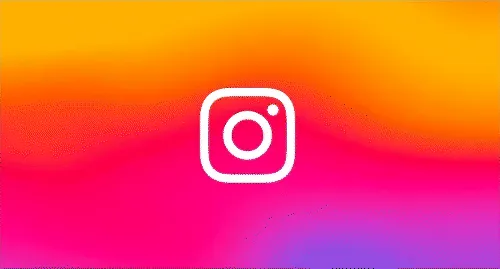
Instagram’s testing out some new options to help spice up your live-streams in the app, with some live broadcasters now able to select a game that they can play with viewers in-stream.
As you can see in these example screens, posted by Ahmed Ghanem, some creators now have the option to play either “This or That”, a question and answer prompt that you can share with your viewers, or “Trivia”, to generate more engagement within your IG live-streams.
That could be a simple way to spark more conversation and interaction, which could then lead into further engagement opportunities from your live audience.
Meta’s been exploring more ways to make live-streaming a bigger consideration for IG creators, with a view to live-streams potentially catching on with more users.
That includes the gradual expansion of its “Stars” live-stream donation program, giving more creators in more regions a means to accept donations from live-stream viewers, while back in December, Instagram also added some new options to make it easier to go live using third-party tools via desktop PCs.
Live streaming has been a major shift in China, where shopping live-streams, in particular, have led to massive opportunities for streaming platforms. They haven’t caught on in the same way in Western regions, but as TikTok and YouTube look to push live-stream adoption, there is still a chance that they will become a much bigger element in future.
Which is why IG is also trying to stay in touch, and add more ways for its creators to engage via streams. Live-stream games is another element within this, which could make this a better community-building, and potentially sales-driving option.
We’ve asked Instagram for more information on this test, and we’ll update this post if/when we hear back.
-

 WORDPRESS7 days ago
WORDPRESS7 days ago10 WordPress Influencers to Follow in 2024 – WordPress.com News
-
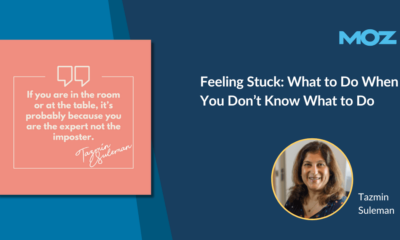
 MARKETING7 days ago
MARKETING7 days agoFeeling Stuck: What to Do When You Don’t Know What to Do
-

 PPC6 days ago
PPC6 days agoCompetitor Monitoring: 7 ways to keep watch on the competition
-

 PPC5 days ago
PPC5 days agoA History of Google AdWords and Google Ads: Revolutionizing Digital Advertising & Marketing Since 2000
-

 WORDPRESS6 days ago
WORDPRESS6 days agoThrive Architect vs Divi vs Elementor
-

 SEARCHENGINES6 days ago
SEARCHENGINES6 days agoMore Google March 2024 Core Update Ranking Volatility
-

 PPC6 days ago
PPC6 days ago31 Ready-to-Go Mother’s Day Messages for Social Media, Email, & More
-

 WORDPRESS5 days ago
WORDPRESS5 days agoTurkish startup ikas attracts $20M for its e-commerce platform designed for small businesses


